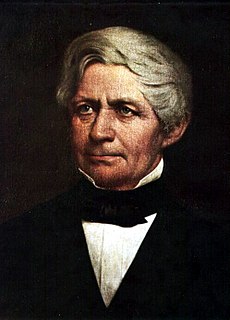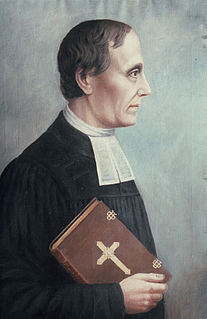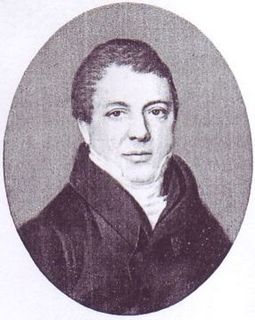
Rauhes Haus is a social service institution, founded in 1833 and located in Hamburg, Germany. It shelters and trains children, the mentally handicapped and disturbed, and cares for the aged. It also trains people for social service careers.

Rauhes Haus is a social service institution, founded in 1833 and located in Hamburg, Germany. It shelters and trains children, the mentally handicapped and disturbed, and cares for the aged. It also trains people for social service careers.
Rauhes Haus was founded at Horn (now a suburb of Hamburg) by the 25-year-old theologian Johann Hinrich Wichern on 12 September 1833 who for a long time was head administrator at the institution. The name of the institution is a corruption of Ruges Haus as the institution started in an old house called by its former occupant Ruges Hus (i.e. Ruge's house), which by a mistranslation into high German became “Rauhes Haus”, i.e. rough house. It was connected with the German Home Mission (or Inner Mission), and started as an industrial institution for poor boys. The scope of the school widened with its growth, and in the early 20th century, besides forming a refuge for neglected children, it received boarding pupils from the higher income families and served as a training school for those wishing to become teachers, superintendents or assistants in hospitals, reformatories, houses of correction and the like. It was supported by voluntary contributions, profits arising from the productive enterprises it carried on, and fees from the richer pupils.

By the early 20th century, there was an average of 100 poor and neglected children, about one-third girls, receiving instruction within its walls. They lived in “families” of from 12 to 15, each “family” being under the care of one of the adult members of the mission training school. The family group model influenced later establishments such as the agricultural colony for delinquent boys at Mettray. It was also adopted in the United Kingdom by a number of poor law authorities and children's charities who set up cottage homes developments to house the children in their care.
The educational department was in the hands of assistants, who also took part in the instruction of the institution, in order to prepare themselves for the work of the Home Mission in other localities. This indeed became one of the most important features of the work carried on by the Rauhes Haus, and its graduates were found in every field of charitable work in Germany. The whole staff of assistants, consisted of young men of 20 to 29 years of age who were formed into a kind of society (Brüderschaft).
After 1844, the institution carried on a printing and book-binding business. Its newsletter was called the Fliegende Blätter.
Today, this basic mission continues with broader criteria for its clientele. The house is owned by the foundation Stiftung Das Rauhe Haus of the German Diakonisches Werk , the charitable work organization of many Protestant churches in Germany.
This article includes a list of references, related reading or external links, but its sources remain unclear because it lacks inline citations .(July 2013) (Learn how and when to remove this template message) |

Historically, an orphanage is a residential institution, or group home, devoted to the care of orphans and other children who were separated from their biological families. Examples of what would cause a child to be placed in orphanages are when the parents were deceased, the biological family was abusive to the child, there was substance abuse or mental illness in the biological home that was detrimental to the child, or the parents had to leave to work elsewhere and were unable or unwilling to take the child. The role of legal responsibility for the support of children whose parent(s) have died or are otherwise unable to provide care differs internationally.

Johann Heinrich Pestalozzi was a Swiss pedagogue and educational reformer who exemplified Romanticism in his approach.

Friedrich Naumann was a German liberal politician and Protestant parish pastor. The Friedrich Naumann Foundation of the Free Democratic Party is named after him.
A foundling hospital was originally an institution for the reception of foundlings, i.e., children who had been abandoned or exposed, and left for the public to find and save. A foundling hospital was not necessarily a medical hospital, but more commonly a children's home, offering shelter and education to foundlings.

Caspar Voght, later Caspar Reichsfreiherr von Voght, was a German merchant and social reformer from Hamburg. Together with his business partner and friend Georg Heinrich Sieveking he led one of the largest trading firms in Hamburg during the second half of the 18th Century. On numerous trade trips, he completely crossed the European continent. One of his greatest achievements was reforming the welfare system of Hamburg. From 1785 he dedicated himself to strengthening agricultural and horticultural projects and built a model agricultural community in Flottbek, close to the gates of Hamburg.

Melamed, Melammed in Biblical times denoted a religious teacher or instructor in general, but which in the Talmudic period was applied especially to a teacher of children, and was almost invariably followed by the word "tinokot" (children). The Aramean equivalent was "makre dardeke".
The Third Order of Saint Francis, is a third order in the Franciscan order. The preaching of Francis of Assisi, as well as his example, exercised such an attraction on people that many married men and women wanted to join the First Order (friars) or the Second Order (nuns), but this being incompatible with their state of life, Francis found a middle way and in 1221 gave them a rule according to the Franciscan charism. Those following this rule became members of the Franciscan Third Order, sometimes called tertiaries. It includes religious congregations of men and women, known as Third Order Regulars; and fraternities of men and women, Third Order Seculars. The latter do not wear a religious habit, take vows, or live in community. However, they do gather together in community on a regular basis. "They make profession to live out the Gospel life and commit themselves to that living out the Gospel according to the example of Francis."
Child and family services is a government and/or non-profit organisation designed to better the well being of individuals who come from unfortunate situations, environmental or biological. People who seek or are sought after to participate in these homes have no other resource to turn to. Children might come from abusive or neglectful homes, or live in very poor and dangerous communities. There are also agencies that cater to people who have biological deficiencies. Families that are trying to live in stable lives come to non-profit organisations for hope of a better future. Child and family services cater to many different types of people who are all in different situations. These services might be mandated through the courts via a governmental child protection agency or they might be voluntary. Child and family services may be mandated if:

Othmarschen is a quarter in the Altona borough of the Hamburg in northern Germany. In 2016 the population was 14,893.

Stonyhurst College and Stonyhurst Saint Mary's Hall are both Catholic boarding schools in the Jesuit tradition, which aim at the creation of Men and Women for Others. Under this principle, a number of charities operate within the two schools. The schools are themselves registered charities, and as such are obliged to benefit the wider community under the terms of the Charities Act 2006.

The Pestalozzi-Stiftung Hamburg is a social and charitable organization founded in 1847 in Hamburg, German Confederation. Over a period of more than hundred years, the organisation ran a children's foster home which changed its location several times within Hamburg. Constant adjustments have taken place over the last decades. Recently, the organisation has maintained facilities and projects in many parts of Hamburg and to a lesser extent in Lower Saxony (Niedersachsen) and Schleswig-Holstein. Its main goal is to provide support and counselling for children, youths and families. It also maintains day care facilities for children and facilities for adults with disabilities and mental illnesses. The organisation's work depends to a large extent on public funds and owns only a limited amount of capital assets which are not used for funding external projects. The Pestalozzi-Stiftung Hamburg appeals to the convictions of Johann Heinrich Pestalozzi whose aim in education was "to strengthen the human being" and to move him to a point where he is "able to help himself". The organisation is based on the idea of offering people the means to attain the ability of "help to self-help".

Johann Hinrich Wichern was a founder of the Home Mission movement in Germany.

Georg Ludwig Detlef Theodor Harms (1808–1865) was a German Lutheran pastor who was nicknamed the "Reviver of the Heath". One of the most significant Christian revivalists of the 19th century, he turned the little village of Hermannsburg on the Lüneburg Heath into the most important centre of revival in Lower Saxony.

The Theater am Goetheplatz, also incorrectly known as the Goethetheater, is the main theatre of the city of Bremen in the north of Germany, the main venue of Theater Bremen. Completed in 1913 in the Neoclassical style, it is located in the cultural district to the east of the old town. After reconstruction with major extensions after the Second World War, it was fully modernized in 2004. Since 2005, it has been a listed building.

The Warburg Haus, Hamburg is a German interdisciplinary forum for art history and cultural sciences and primarily for political iconography. It is dedicated to the life and work of Aby Warburg and run by the University of Hamburg as a semi-independent seminar. "It issues a series of art historical publications directly modeled on the original institution's studies and lectures, and is a sponsor of the reprinted 'Study Edition' released through the Akademie Verlag in Berlin."

Amalie Wilhelmine Sieveking was a German philanthropist and social activist who founded the Weiblicher Verein für Armen- und Krankenpflege. She initiated employment and practical training for the poor, and promoted the building of affordable housing and hospitals. She is regarded as a forerunner of modern German social work.
Cottage homes are used in residential child care communities and other Group homes.

Karl Sieveking, born 1 November 1787 in Hamburg, died 30 June 30 1847, was a Syndicus of Hamburg, diplomat, politician, patron of the arts and philanthropist. The four syndics sat in the Senate with the senators and took part in the debates, but had no vote. The office, at that time, was somewhat analogous to that of a cabinet minister. To them were entrusted all important negotiations, and the preparation of every legislative enactment. A syndicus ranked between a mayor and a senator and had the title "Magnificence". Sieveking was one of the most influential figures in Hamburg in the first half of the 19th century. Among the many traces he left behind in his hometown include the Rauhes Haus, the Kunstverein and the former country estate Hammer Park.

The Kontorhaus District is the southeastern part of Altstadt, Hamburg, between Steinstraße, Meßberg, Klosterwall and Brandstwiete. The streetscape is characterised by large office buildings in the style of Brick Expressionism of the early 20th century.

Hermann Rauhe is a German musicologist.